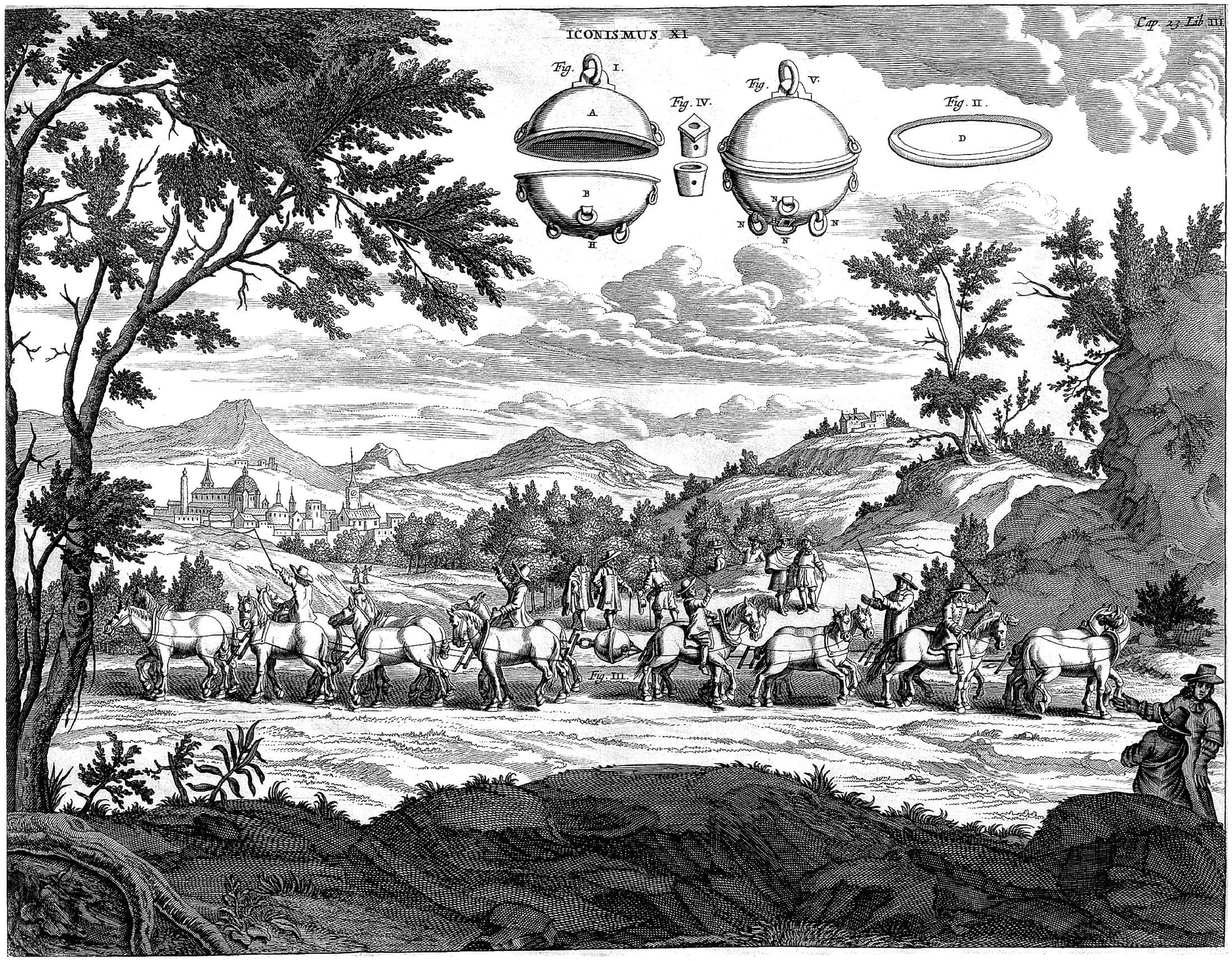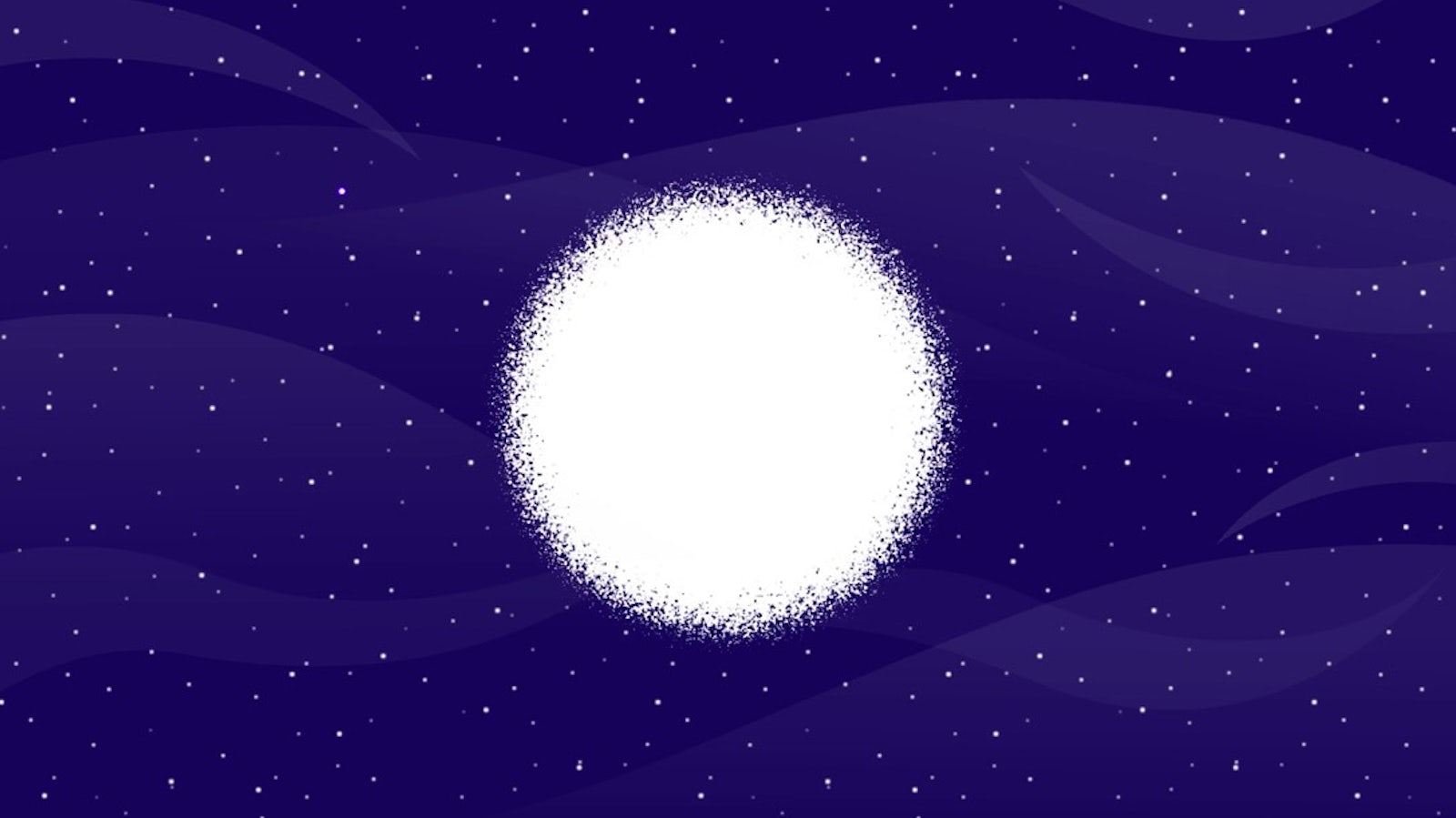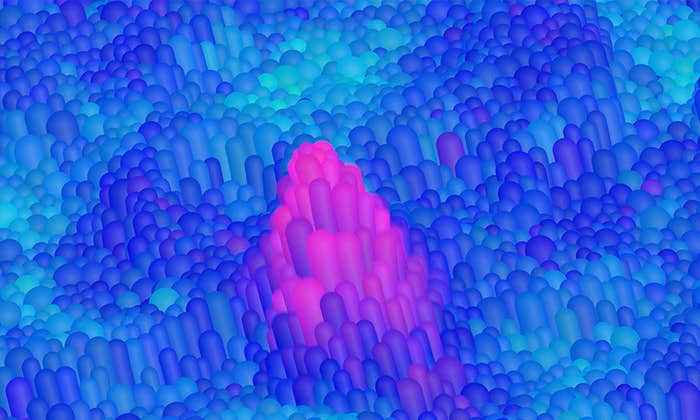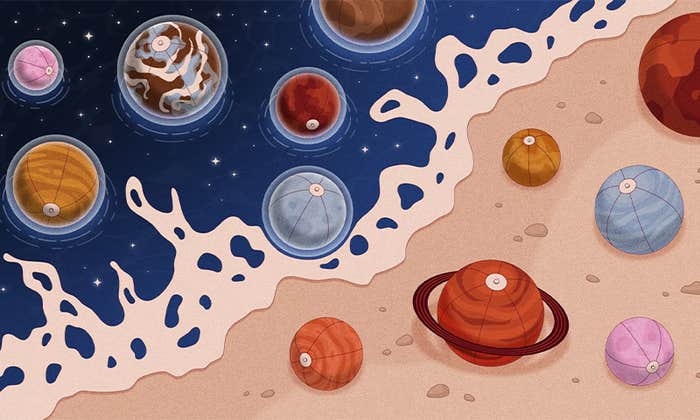Millennia ago, Aristotle asserted that nature abhors a vacuum, reasoning that objects would fly through truly empty space at impossible speeds. In 1277, the French bishop Etienne Tempier shot back, declaring that God could do anything, even create a vacuum.
Then a mere scientist pulled it off. Otto von Guericke invented a pump to suck the air from within a hollow copper sphere, establishing perhaps the first high-quality vacuum on Earth. In a theatrical demonstration in 1654, he showed that not even two teams of horses straining to rip apart the watermelon-size ball could overcome the suction of nothing.
Since then, the vacuum has become a bedrock concept in physics, the foundation of any theory of something. Von Guericke’s vacuum was an absence of air. The electromagnetic vacuum is the absence of a medium that can slow down light. And a gravitational vacuum lacks any matter or energy capable of bending space. In each case the specific variety of nothing depends on what sort of something physicists intend to describe. “Sometimes, it’s the way we define a theory,” said Patrick Draper, a theoretical physicist at the University of Illinois.
As modern physicists have grappled with more sophisticated candidates for the ultimate theory of nature, they have encountered a growing multitude of types of nothing. Each has its own behavior, as if it’s a different phase of a substance. Increasingly, it seems that the key to understanding the origin and fate of the universe may be a careful accounting of these proliferating varieties of absence.

“We’re learning there’s a lot more to learn about nothing than we thought,” said Isabel Garcia Garcia, a particle physicist at the Kavli Institute for Theoretical Physics in California. “How much more are we missing?”
So far, such studies have led to a dramatic conclusion: Our universe may sit on a platform of shoddy construction, a “metastable” vacuum that is doomed—in the distant future—to transform into another sort of nothing, destroying everything in the process.
Quantum Nothingness
Nothing started to seem like something in the 20th century, as physicists came to view reality as a collection of fields: objects that fill space with a value at each point (the electric field, for instance, tells you how much force an electron will feel in different places). In classical physics, a field’s value can be zero everywhere so that it has no influence and contains no energy. “Classically, the vacuum is boring,” said Daniel Harlow, a theoretical physicist at the Massachusetts Institute of Technology. “Nothing is happening.”
But physicists learned that the universe’s fields are quantum, not classical, which means they are inherently uncertain. You’ll never catch a quantum field with exactly zero energy. Harlow likens a quantum field to an array of pendulums—one at each point in space—whose angles represent the field’s values. Each pendulum hangs nearly straight down but jitters back and forth.
Left alone, a quantum field will stay in its minimum-energy configuration, known as its “true vacuum” or “ground state.” (Elementary particles are ripples in these fields.) “When we talk about the vacuum of a system, we have in mind in some loose way the preferred state of the system,” said Garcia Garcia.
Most of the quantum fields that fill our universe have one, and only one, preferred state, in which they’ll remain for eternity. Most, but not all.
True and False Vacuums
In the 1970s, physicists came to appreciate the significance of a different class of quantum fields whose values prefer not to be zero, even on average. Such a “scalar field” is like a collection of pendulums all hovering at, say, a 10-degree angle. This configuration can be the ground state: The pendulums prefer that angle and are stable.
In 2012, experimentalists at the Large Hadron Collider proved that a scalar field known as the Higgs field permeates the universe. At first, in the hot, early universe, its pendulums pointed down. But as the cosmos cooled, the Higgs field changed state, much as water can freeze into ice, and its pendulums all rose to the same angle. (This nonzero Higgs value is what gives many elementary particles the property known as mass.)

With scalar fields around, the stability of the vacuum is not necessarily absolute. A field’s pendulums might have multiple semi-stable angles and a proclivity for switching from one configuration to another. Theorists aren’t certain whether the Higgs field, for instance, has found its absolute favorite configuration—the true vacuum. Some have argued that the field’s current state, despite having persisted for 13.8 billion years, is only temporarily stable, or “metastable.”
If so, the good times won’t last forever. In the 1980s, the physicists Sidney Coleman and Frank De Luccia described how a false vacuum of a scalar field could “decay.” At any moment, if enough pendulums in some location jitter their way into a more favorable angle, they’ll drag their neighbors to meet them, and a bubble of true vacuum will fly outward at nearly light speed. It will rewrite physics as it goes, busting up the atoms and molecules in its path. (Don’t panic. Even if our vacuum is only metastable, given its staying power so far, it will probably last for billions of years more.)
In the potential mutability of the Higgs field, physicists identified the first of a practically infinite number of ways that nothingness could kill us all.
More Problems, More Vacuums
As physicists have attempted to fit nature’s confirmed laws into a larger set (filling in giant gaps in our understanding in the process), they have cooked up candidate theories of nature with additional fields and other ingredients.
When fields pile up, they interact, influencing each other’s pendulums and establishing new mutual configurations in which they like to get stuck. Physicists visualize these vacuums as valleys in a rolling “energy landscape.” Different pendulum angles correspond to different amounts of energy, or altitudes in the energy landscape, and a field seeks to lower its energy just as a stone seeks to roll downhill. The deepest valley is the ground state, but the stone could come to rest—for a time, anyway—in a higher valley.
A couple of decades ago, the landscape exploded in scale. The physicists Joseph Polchinski and Raphael Bousso were studying certain aspects of string theory, the leading mathematical framework for describing gravity’s quantum side. String theory works only if the universe has some 10 dimensions, with the extra ones curled up into shapes too tiny to detect. Polchinski and Bousso calculated in 2000 that such extra dimensions could fold up in a tremendous number of ways. Each way of folding would form a distinct vacuum with its own physical laws.
The discovery that string theory allows nearly countless vacuums jibed with another discovery from nearly two decades earlier.

Cosmologists in the early 1980s developed a hypothesis known as cosmic inflation that has become the leading theory of the universe’s birth. The theory holds that the universe began with a quick burst of exponential expansion, which handily explains the universe’s smoothness and hugeness. But inflation’s successes come at a price.
The researchers found that once cosmic inflation started, it would continue. Most of the vacuum would violently explode outward forever. Only finite regions of space would stop inflating, becoming bubbles of relative stability separated from each other by inflating space in between. Inflationary cosmologists believe we call one of these bubbles home.
A Multiverse of Vacuums
To some, the notion that we live in a multiverse—an endless landscape of vacuum bubbles—is disturbing. It makes the nature of any one vacuum (such as ours) seem random and unpredictable, curbing our ability to understand our universe. Polchinski, who died in 2018, told the physicist and author Sabine Hossenfelder that discovering string theory’s landscape of vacuums initially made him so miserable it led him to seek therapy. If string theory predicts every imaginable variety of nothing, has it predicted anything?
To others, the plethora of vacuums is not a problem; “in fact, it’s a virtue,” said Andrei Linde, a prominent cosmologist at Stanford University and one of the developers of cosmic inflation. That’s because the multiverse potentially solves a great mystery: the ultra-low energy of our particular vacuum.
When theorists naïvely estimate the collective jittering of all the universe’s quantum fields, the energy is huge—enough to rapidly accelerate the expansion of space and, in short order, rip the cosmos apart. But the observed acceleration of space is extremely mild in comparison, suggesting that much of the collective jittering cancels out and our vacuum has an extraordinarily low positive value for its energy.

In a solitary universe, the tiny energy of the one and only vacuum looks like a profound puzzle. But in a multiverse, it’s just dumb luck. If different bubbles of space have different energies and expand at different rates, galaxies and planets will form only in the most lethargic bubbles. Our calm vacuum, then, is no more mysterious than the Goldilocks orbit of our planet: We find ourselves here because most everywhere else is inhospitable to life.
Love it or hate it, the multiverse hypothesis as currently understood has a problem. Despite string theory’s seemingly infinite menu of vacuums, so far no one has found a specific folding of tiny extra dimensions that corresponds to a vacuum like ours, with its barely positive energy. String theory seems to yield negative-energy vacuums much more easily.
Perhaps string theory is untrue, or the flaw could lie with researchers’ immature understanding of it. Physicists may not have hit on the right way to handle positive vacuum energy within string theory. “That’s perfectly possible,” said Nathan Seiberg, a physicist at the Institute for Advanced Study in Princeton, New Jersey. “This is a hot topic.”
Or our vacuum could just be inherently sketchy. “The prevailing view is that [positively energized] space is not stable,” Seiberg said. “It could decay to something else, so that could be one of the reasons why it is so hard to understand the physics of it.”
These researchers suspect that our vacuum is not one of reality’s preferred states, and that it will someday jitter itself into a deeper, more stable valley. In doing so, our vacuum could lose the field that generates electrons or pick up a new palette of particles. The tightly folded dimensions could come unfurled. Or the vacuum could even give up on existence entirely.
“That’s another one of the options,” Harlow said. “A true nothing.”
The End of the Vacuum
The physicist Edward Witten first discovered the “bubble of nothing” in 1982. While studying a vacuum with one extra dimension curled up into a tiny circle at each point, he found that quantum jitters inevitably jiggled the extra dimension, sometimes shrinking the circle to a point. As the dimension vanished into nothingness, Witten found, it took everything else with it. The instability would spawn a rapidly expanding bubble with no interior, its mirrorlike surface marking the end of spacetime itself.
This instability of tiny dimensions has long plagued string theory, and various ingredients have been devised to stiffen them. In December, Garcia Garcia, together with Draper and Benjamin Lillard of Illinois, calculated the lifetime of a vacuum with a single extra curled-up dimension. They considered various stabilizing bells and whistles, but they found that most mechanisms failed to stop the bubbles. Their conclusions aligned with Witten’s: When the size of the extra dimension fell below a certain threshold, the vacuum collapsed at once. A similar calculation—one extended to more sophisticated models—could rule out vacuums in string theory with dimensions below that size.
With a large enough hidden dimension, however, the vacuum could survive for many billions of years. This means that theories producing bubbles of nothing could plausibly match our universe. If so, Aristotle may have been more right than he knew. Nature may not be a big fan of the vacuum. In the extremely long run, it may prefer nothing at all.
Lead image: An instability in the vacuum of space could suddenly spawn a rapidly expanding bubble with no interior—true nothingness. Credit: Merrill Sherman/Quanta Magazine
This article was originally published on the Quanta Abstractions blog.
































